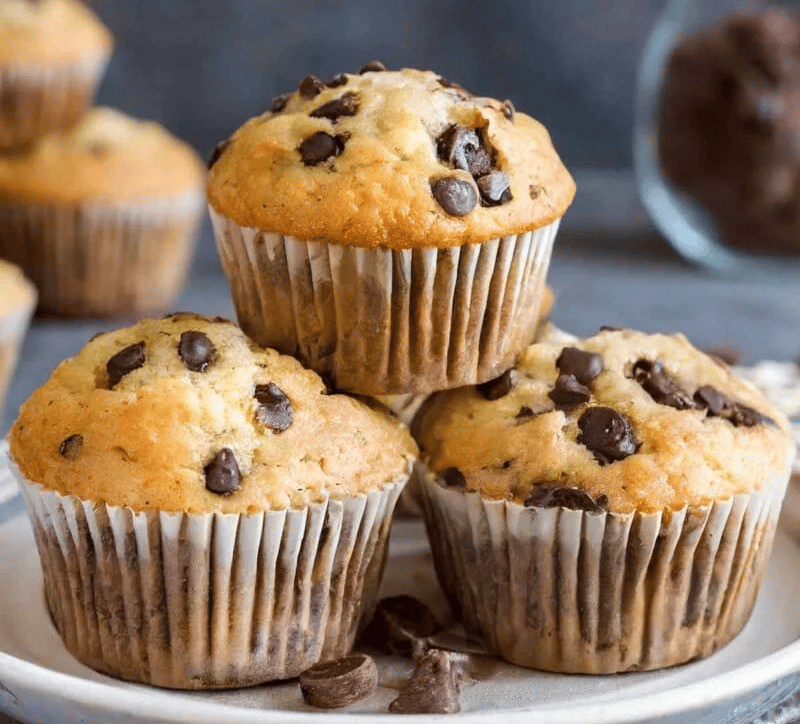Editors’ Note: Week 10!! Starbucks’ protein drinks released this week. If you try them, let us know what you think.
Or copy and paste this link to others: {{rp_refer_url}}
🍪 Baking with Protein Powder
Baking with protein powder has become popular because it makes familiar comfort foods double as fuel for muscle health. It is not as simple as swapping flour for a scoop of protein powder. You are changing the chemistry of the recipe, and if you ignore that, the result is usually dry, rubbery, or chalky. Done properly though, protein baking can turn banana bread, muffins, and even pancakes into convenient high-protein meals.
How to bake smarter
Different protein powders behave in different ways. Whey tends to dry out quickly and make cookies spread too thin. Casein, egg white, and plant blends hold structure better and create a softer crumb. A good rule is to replace no more than one third of the flour with protein powder. If you want more protein than that, you need a recipe written for it rather than a casual substitution.
Protein powders bind water, so moisture is critical. Greek yogurt, cottage cheese, mashed banana, applesauce, or a little oil all help. Binders such as eggs or xanthan gum restore tenderness when gluten is reduced. Flavor matters too. Since many powders are already sweetened or flavored, you can often reduce added sugar and rely on cocoa, cinnamon, vanilla, or citrus zest to bring balance. Finally, choose powders that are third-party tested so you know the label matches what is inside.
The science
When protein is heated it will denature, which means its shape unfolds, but that does not make it useless. Your body still absorbs the amino acids, sometimes even more efficiently. The bigger issue is browning, or the Maillard reaction. Sugars react with amino acids, especially lysine, and a small fraction of the lysine becomes less available. This is not catastrophic. It just means that very high heat and very dry baking can slightly reduce the nutritional value. In practice, this matters only if you overbake. Moist recipes and shorter cooking times protect quality.
Pros and pitfalls
The advantage of protein baking is that it delivers a boost of protein in a form that looks and tastes like a treat. These modified recipes have added satiety and make it easier to distribute protein evenly throughout the day, which is key for muscle protein synthesis (MPS). Many of them are also portable and freezable which makes them convenient to eat and practical to make in large batches.
The drawbacks are mostly preventable. Swapping too much flour can ruin texture. Overbaking can make the product dry and slightly reduce lysine availability. Some plant proteins add earthy flavors that need balancing. None of these are deal-breakers, they just require practice and the right recipe.
Recipes that deliver
Banana bread made with cottage cheese is moist, flavorful, and forgiving.
Protein muffins can be adapted with blueberries, chocolate, or nuts and are great for batch prep.
Protein pancakes are great because cooking on the stovetop avoids the long, dry heat of an oven.
Each of these options gives you a reliable base with enough flexibility to suit your preferences.
Why you should care
Protein baking is not just a social media fad, it is a practical way to make everyday foods work harder for you. Instead of relying only on shakes or bars, you can turn banana bread, muffins, or pancakes into snacks that deliver protein bumps while still tasting familiar. That makes it easier to hit your daily protein target without feeling like you are forcing it.
It also helps keep you full, since protein-rich foods increase satiety more than carbs or fat. Portable and freezable options mean you can grab a high-protein choice on busy days instead of skipping meals or leaning on lower-quality snacks.
The learning curve is worth it. Once you understand how different protein powders behave in recipes, you can avoid the common pitfalls of dry texture, rubbery structure, or reduced flavor and consistently produce baked goods that are both nutritious and enjoyable. In the long run, protein baking is about building habits that make muscle health sustainable and enjoyable rather than restrictive.
📚 Today’s Dictionary ( Blue Words )
-
Casein : A slow-digesting milk protein that supports muscle repair and steady amino acid release.
-
Third-party tested : Certification by independent organizations to ensure supplement quality and safety.
-
Lysine : An essential amino acid important for protein synthesis, tissue repair, and immune function.
-
Muscle Protein Synthesis (MPS) : The process of building new muscle proteins.
🔄 Read More
Stay Stacked,
The Stack
Follow us on X/Twitter: @StackedHealth_
Join our Discord
Or copy and paste this link to others: {{rp_refer_url}}
Current Referral Count: {{rp_num_referrals}}
What did you think of today's newsletter?
Disclaimer: This content is for informational purposes only and is not intended to substitute for professional medical advice, diagnosis, or treatment. We aim to provide useful, evidence-informed insights. Your health is personal, and decisions should be made based on what works best for you.
